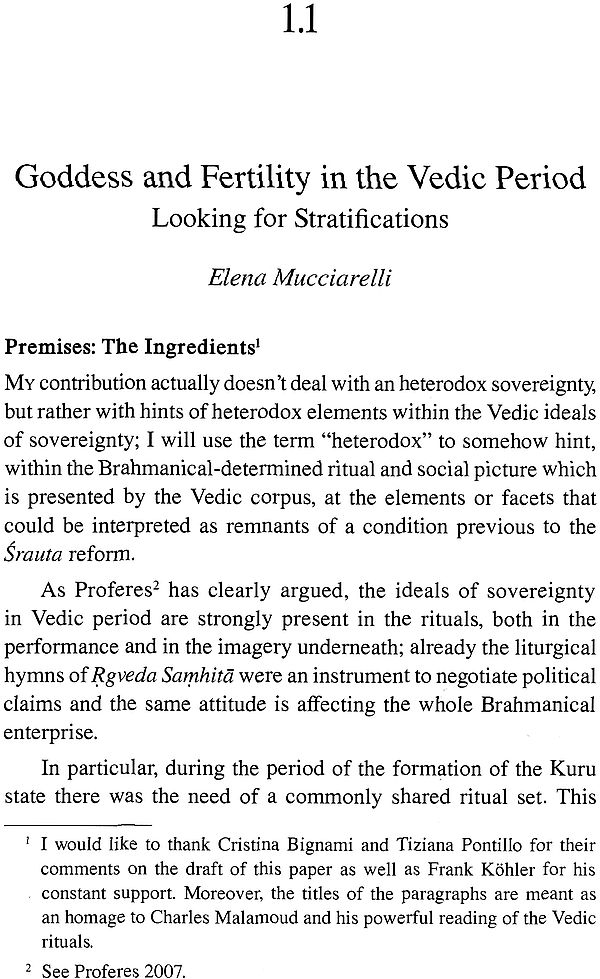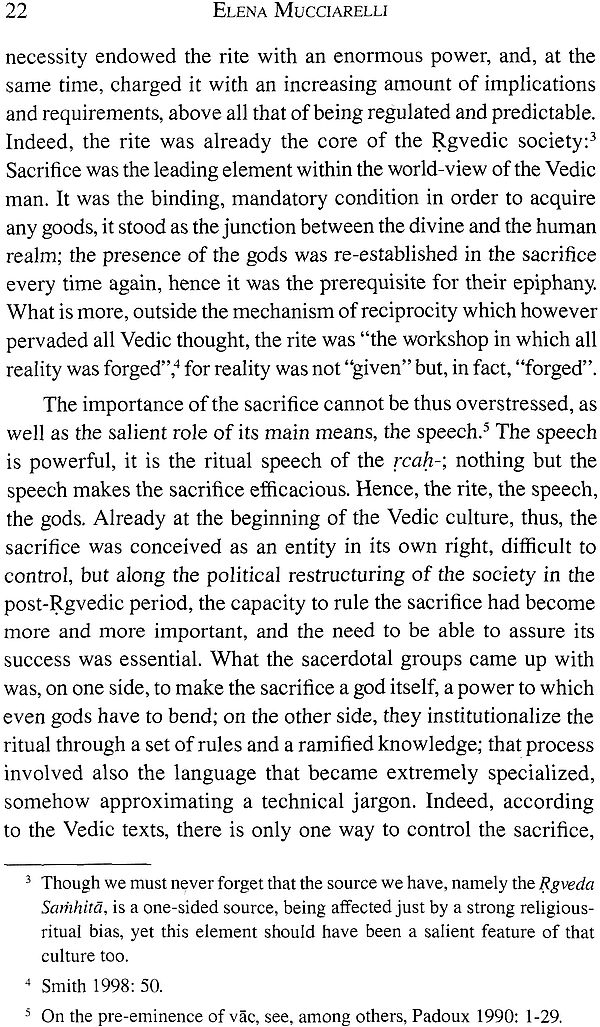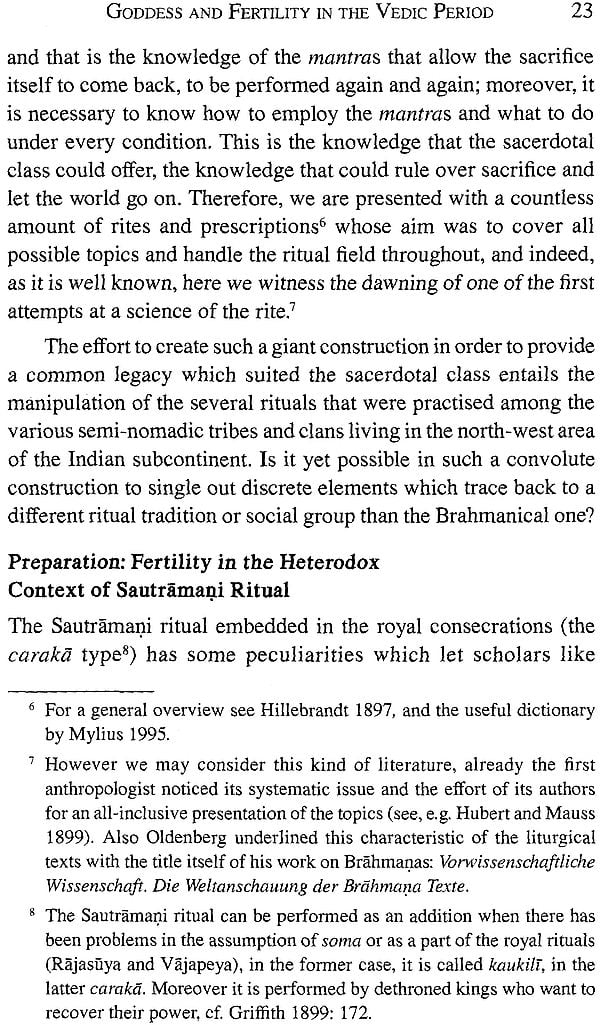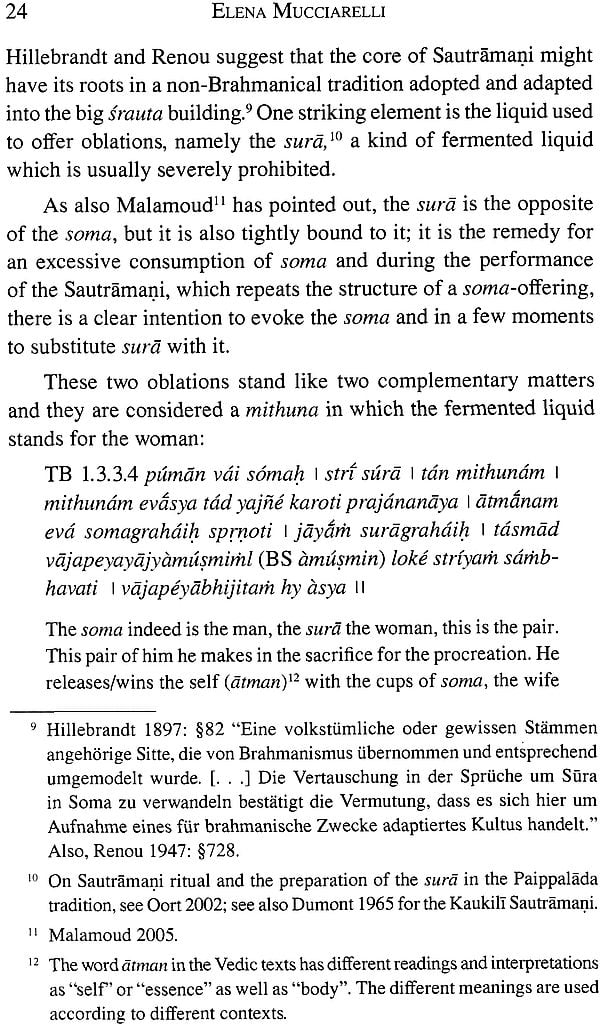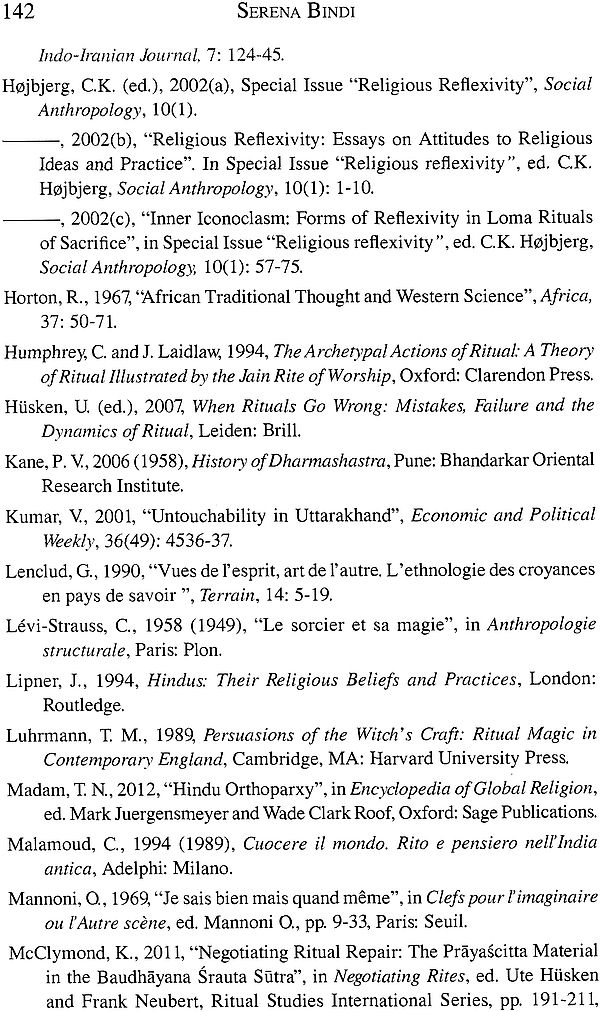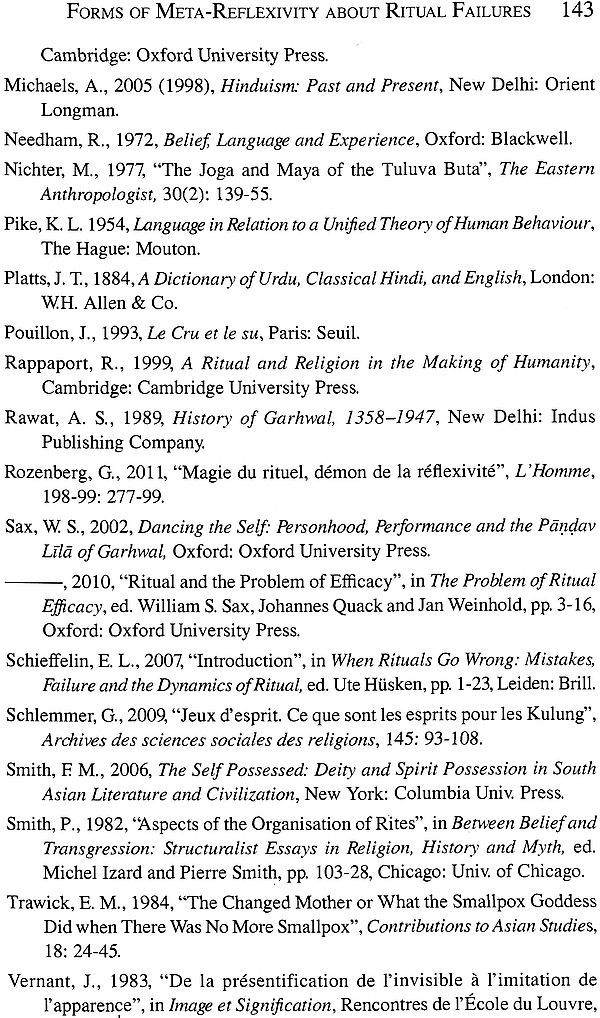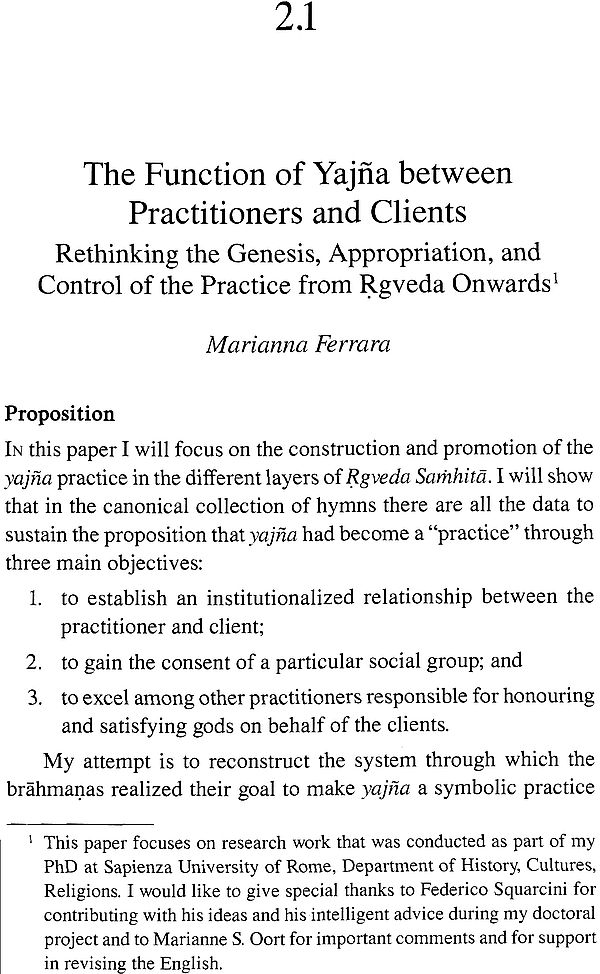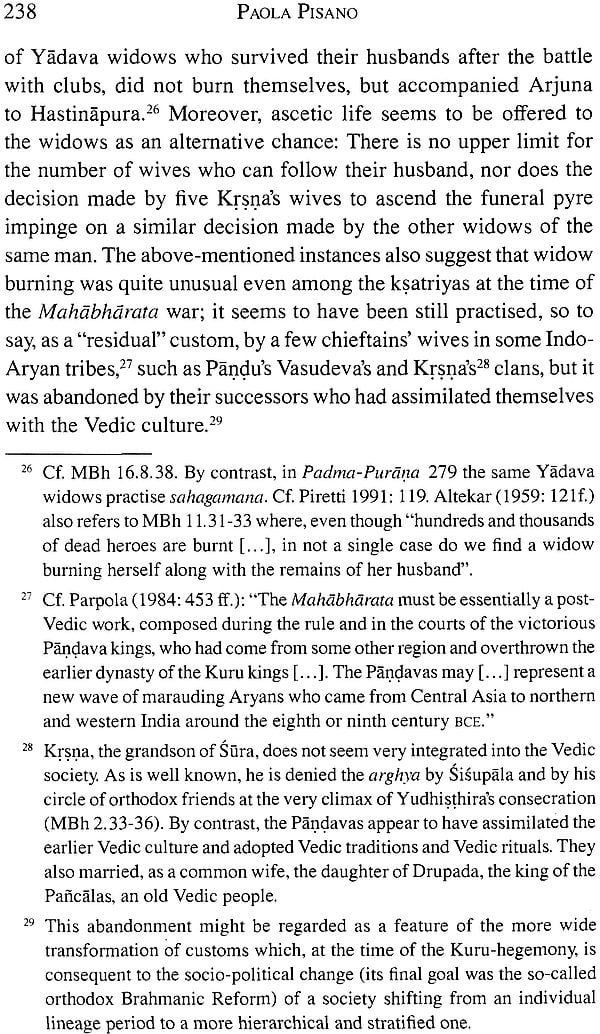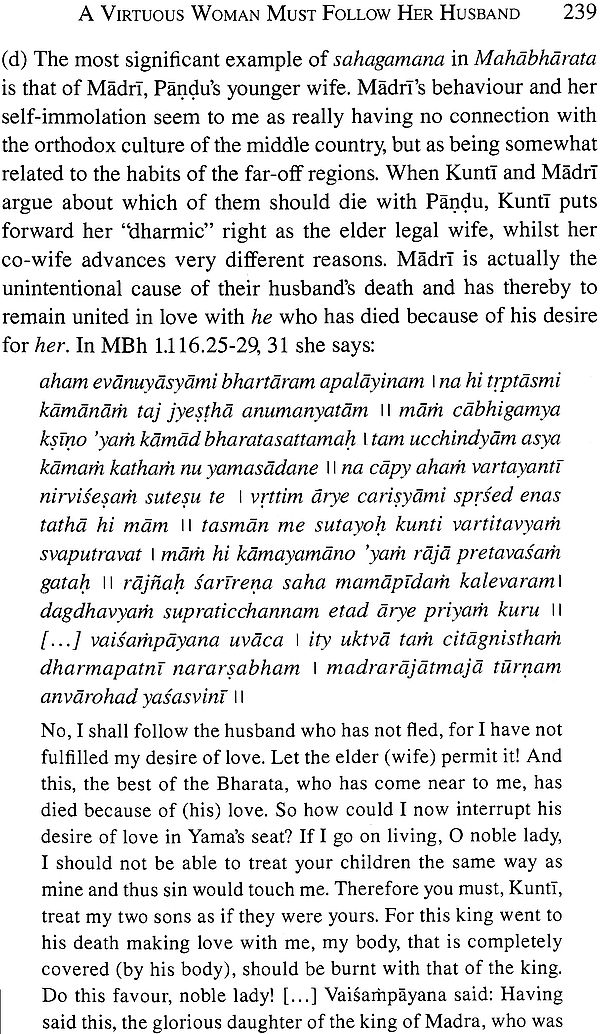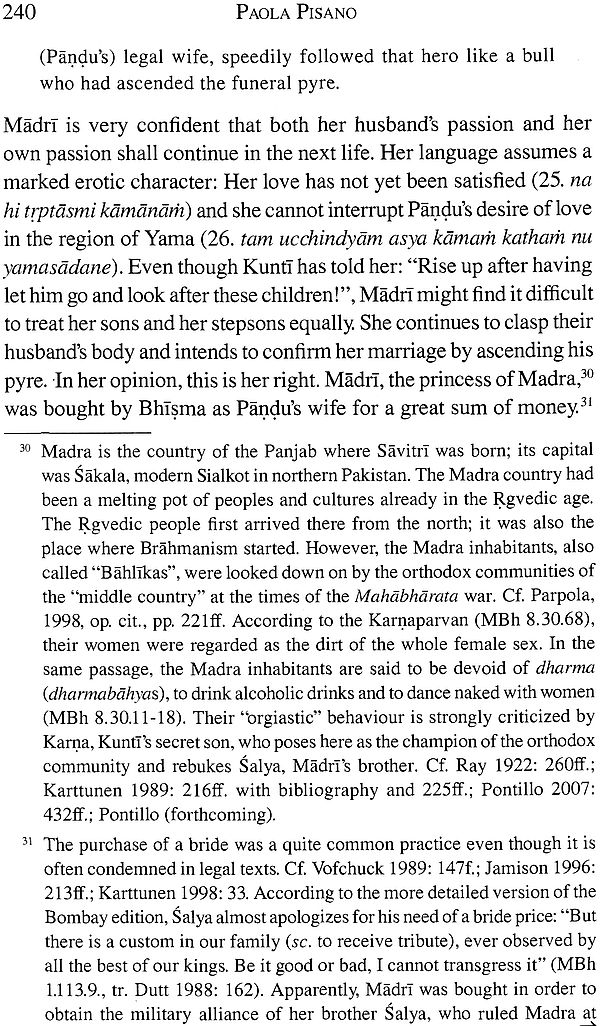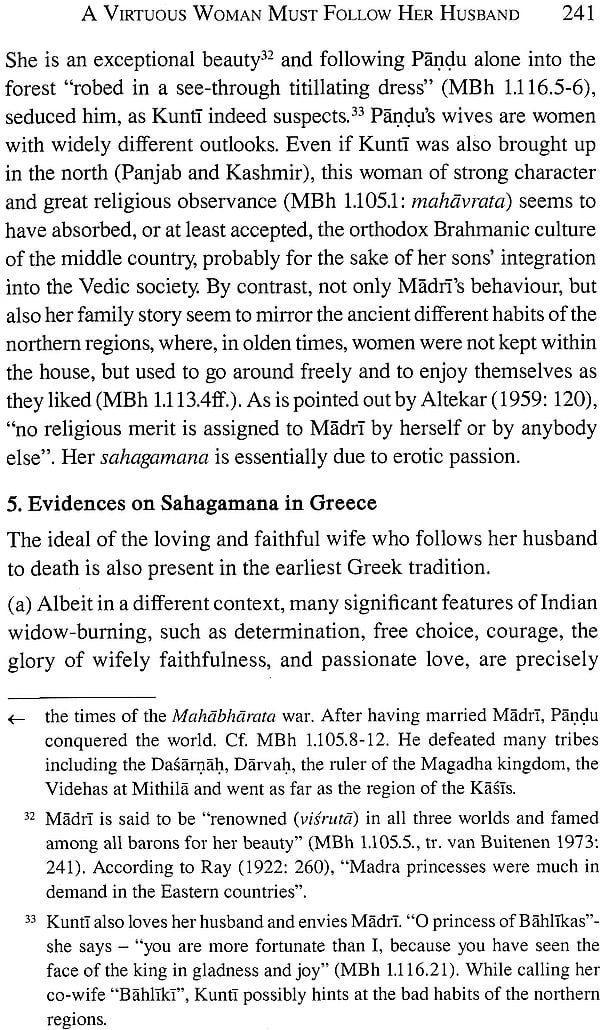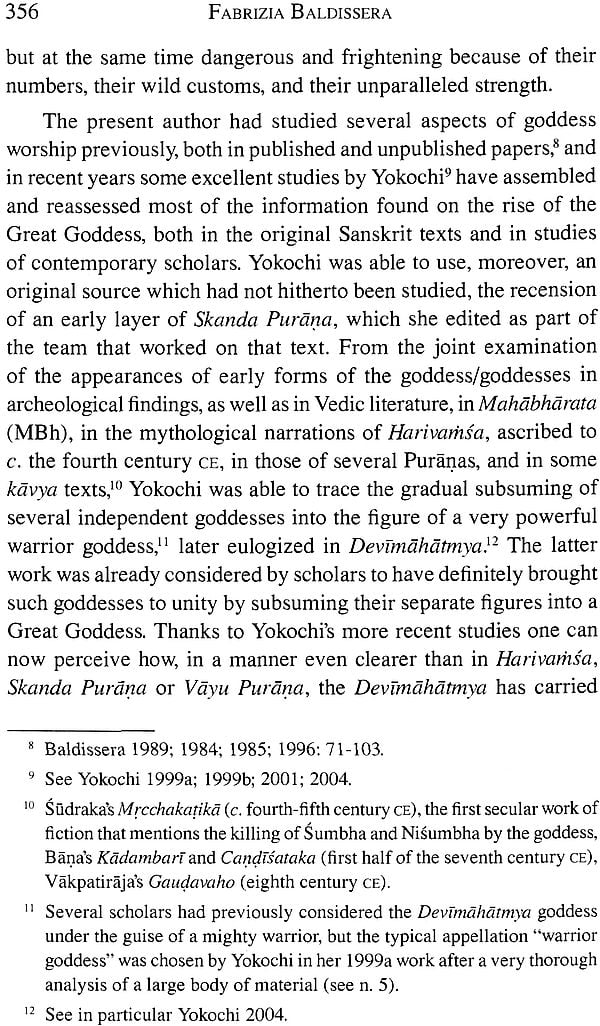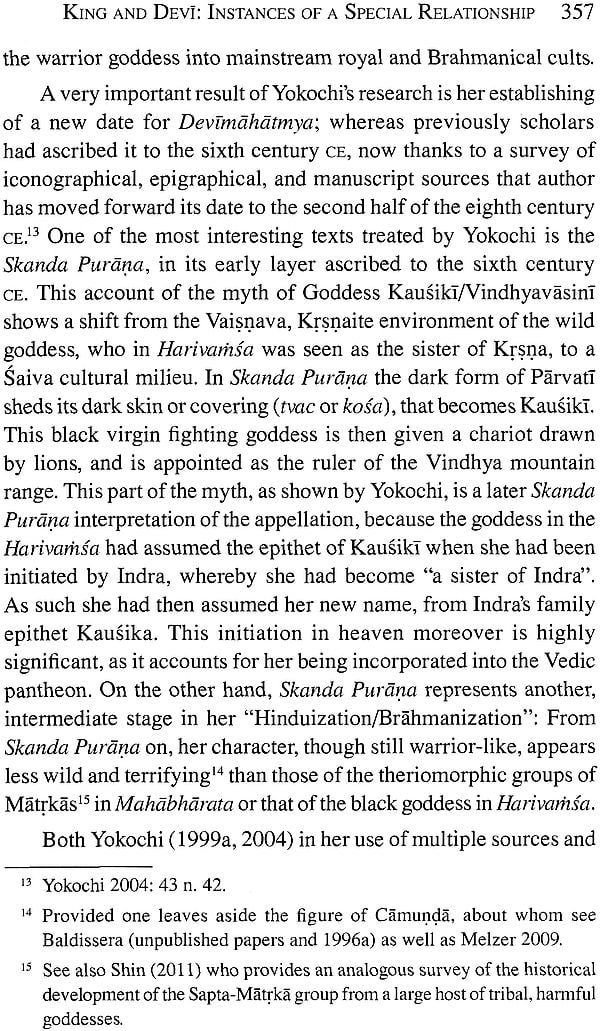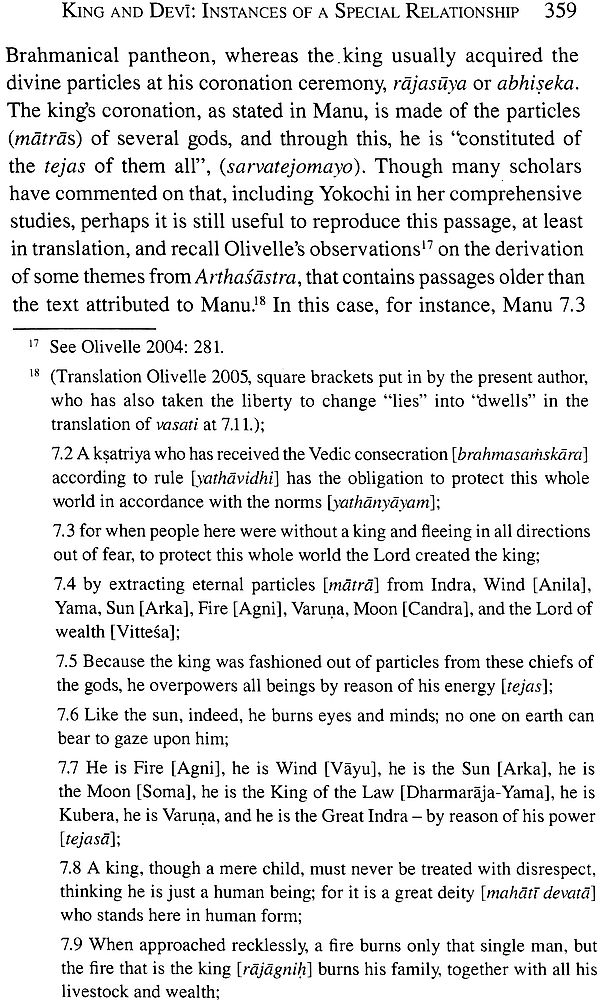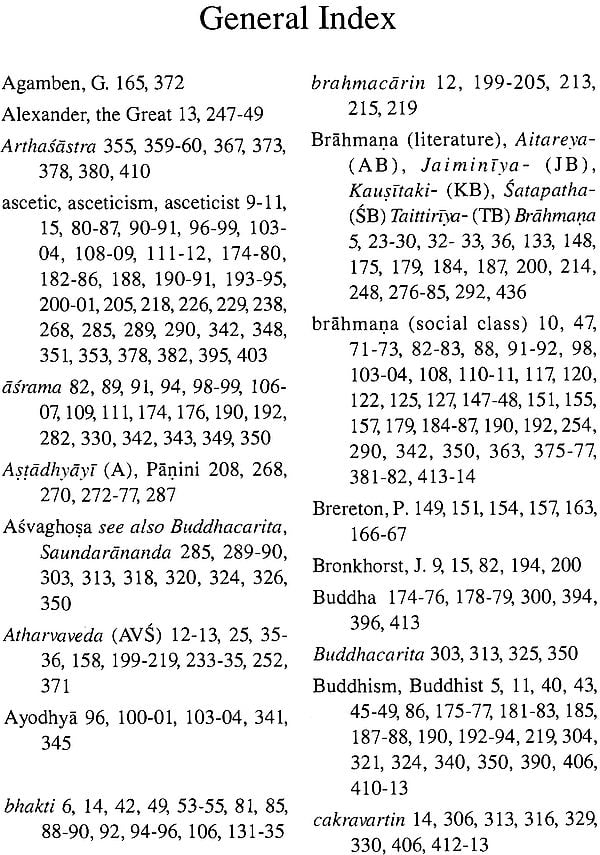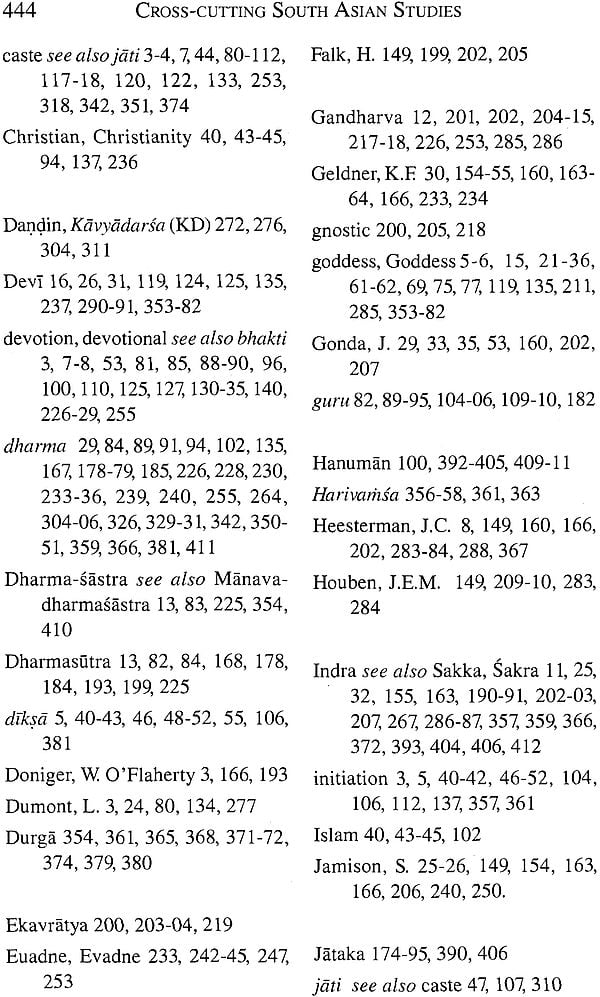
Cross-Cutting South Asian Studies (An Interdisciplinary Approach)
Book Specification
| Item Code: | NAN413 |
| Author: | Serena Bindi, Elena Mucciarelli and Tiziana Pontillo |
| Publisher: | D. K. Printworld Pvt. Ltd. |
| Language: | English |
| Edition: | 2016 |
| ISBN: | 97888124608692 |
| Pages: | 456 |
| Cover: | Hardcover |
| Other Details | 8.5 inch x 5.5 inch |
| Weight | 760 gm |
Book Description
This volume, Cross-cutting South Asian Studies: An Interdisciplinary Approach focuses on two themes that are central to focuses on two themes that are central to Indological studies: religious practices and heterodox sovereignty.
The first part of this volume “The Indian Ocean of Religious Practices: Past and Present” deals with different issues related to religious practices and institutions in South Asia. These contributions share a similar theoretical perspective on religion: they all highlight, in various ways and through different disciplinary approaches, how, in order to fully understand religious practices and their inherent dynamics, it is essential to consider the power relations that consider the power relations that continually imbue and shape them.
The second part “kings, Priests and Prominent Roles Interpreted through the Visual, Literary, speculative, and Technical Indian Arts” seeks to substantiate the well-known opposition between the so-called orthodox sovereignty and the heterodox one, of which the so-called vratya-power seems to be a prime example. Therefore, the target of the relevant contributions consists in focusing on different contexts where the king chieftain, or merely the patron of the sacrifice, gains his temporary pre-eminence in an agonistic way which includes an important non-permanent ascetic dimension.
Serena Bindi studied social anthropology and South Asian studies at the University of Siena and at the Ecole des Hautes Etudes en Sciences Sociales of Paris, where she earned a PhD in 2009. She is currently Associate Professor of social anthropology at Paris Descartes University. http://www.canthe1.fr/serena-bindi.html
Elena Mucciarelli is Research Fellow at the Eberhard Karls Universitat Tubingen (“kudiyattam: Living Sanskrit Theatre in the Kerala Tradition”), where she is also project leader for a research on royal legitimation in Medieval Karnataka. After completing her PhD in Indology (Turin-Tubingen 2011) with a research on the change in the semantics of the Vedic language, she was a Fellow at Cagliari University. http://www.uni- tuebingen.de/de/35636
Tiziana Pontillo is Associate Professor of Sanskrit Language and Literature at Cagliari University. She gained her PhD with a thesis on Zero-Morphology in Panini’s Grammar (Milan 2000). She was project leader at Cagliari University for a 3-year RAS/EU Research on Vratyas (2013-15). She has authored ninety contributions, mainly on technical Sanskrit literatures.http://people.unica.it/tizianapontillo/
This volume is based on the results of different research activities carried out mainly at Cagliari University and focuses on two themes that are central to Indological studies: religious practices and heterodox sovereignty.
Part I: The Indian Ocean of Religious Practices: Past and Present, edited by serena Bindi and Elena Mucciarelli
The original pieces of research presented in the first part of the volume focus on the topic of religious practices in South Asia. The main aim of this part is to highlight the heuristic potential of a specific methodological approach to the study of Asia: these papers have been presented and discussed in depth in interdisciplinary research seminars, where south Asian specialists of different historical periods and disciplines engaged in fruitful debates which deliberately cross-cut disciplinary and historical boundaries. For this reason, the academic backgrounds of the authors cover a wide range of disciplines including Indology, religious studies, social anthropology, social and intellectual history, and linguistics; additionally, the time-spans involved in these articles stretch from the Vedic period to the contemporary epoch, passing through medieval times.
Before coming to the contents' of the contributions, it is necessary to say a few words on the methodology which has given birth to these articles and the research network which has allowed such methodology to be put into practice. Methodological Approach Methodological approach Cross-cutting South Asian Studies
A first version of the papers contained in this part of the book was presented at the "Cross-cutting Asian Studies: An Interdisciplinary Approach" conference, organized in Cagliari in June 2012. On this occasion, scholars from different disciplines participated in extensive discussions with colleagues from other disciplinary fields, but all of whom shared the same interest in a certain topic.
The conference was a product of the specific methodology that is part of The Coffee Break Project, an international network of Asian Studies, In 2010, thanks to the initiative of a group of young scholars from a range of different institutions and disciplinary fields, this network was able to broaden its horizons. The main pillar of this research group is the firm belief in the benefits of two methodological stances: the exercise of the interdisciplinary approach and the practice of extensive discussions. This network of scholars has already organized several conferences which, on every occasion, have succeeded in favoring an open-minded exchange of ideas, suggestions, and criticisms. In reality, this methodological choice is the reason why the conferences arranged by this group of scholars were given the name Coffee Break Conferences. The idea lying behind this uncommon title is, as pointed out by Elisa Freschi, et al. (2011: 39):
The commonsensical statement that the most interesting parts of a conference are the coffee breaks [...] one often takes part in challenging and fascinating debates while sipping at one’s cup of coffee.
Taking the challenge posed by this statement seriously, the conferences invite participants to put aside the inflexible formulations that dominate many academic debates and encourage them to share unsolved methodological or epistemological problems in a clime of fruitful informality. This procedure entails several benefits. Multidisciplinary in scope, such methodology encourages connections and dialogues between scholars who are concerned with the studies of antiquity and modernity in Asia. Hence, for example, the study of a topic, such as religion and power in Asia, might be renovated by bringing together the methods and findings of social sciences with those of classical Indology. In this part, Debicka-Borek approaches the study of an initiation cult through a philological method which is integrated with anthropological insights from Victor Turner. In the same way, Bignami makes use of epigraphic data and tries to analyse them through the historical interpretation provided by Kulke. Daniela Bevilacqua's article offers another clear example of how contributions and in sights stemming from different disciplines-Indology, history, as well as social sciences-can be used complementarily in order to shed light on a specific topic, in this case, the relationship between devotional religion and caste society in India. Likewise, Serena Bindi complements the fieldwork method and anthropological literature by drawing upon religious studies and Indological sources in order to tackle the issues of belief, doubt, and reflexivity in the central Himalayan region.
It is useful to bear in mind that the possibilities of this interdisciplinary dialogue are extremely rich. Indeed, even when scholars cannot share contents, methodological concerns can be shared and their proposers can benefit from this process.
Finally, although this interdisciplinary approach is not new, the ways of implementing and putting it into practice are still a work in progress. The question still remains as to how far, how deep, and within which frameworks and institutions scholars from different research fields can share their concerns and methods. This part of the book is the product of one of the arenas where this dialogue was made possible. Religion and Power in South Asia
All the articles of this section deal with different issues related to religious practices and institutions in South Asia. In addition to the fact that they all address the field of religion, these contributions also share a similar theoretical perspective on religion: they all highlight, in various ways and through different disciplinary approaches, how, in order to fullt understand religious practices and their inherent dynamics, it is essintial to consider the power relations that continually imbue and shape them. The three articles by Elena Mucciarelli, Ewa Debicka-Borek, and Cristina Bignami examine the processes of mingling and assimilation between practices and beliefs that characterized the so-called "Vedic" and "Hindu" religions. These three contributions highlight how such a development was strongly influenced by hierarchical patterns. Power dynamics are also at the very centre of the fourth article, by Daniela Bevilacqua, which shows how a religious sect has historically dealt with, and indeed still continues to apprehend, the issue of caste society. This part ends with a study by Serena Bindi in which the topics of religion and power are articulated in order to show how powerful discourses are used to protect the local ritual system from collapsing when confronted with ritual failures and internal scepticisms.
About the Contributions
Elena Mucciarelli's contribution deals with the Vedic period and although it does not consider two different religious streams, it still tries to question the idea of a single Vedic religion. This approach has been adopted by many scholars over the last decades, and has already resulted in a wider and more accurate understanding of the ancient cults among the tribes of northern India in the period that extends from 1500 BCE to CE 500. Mucciarelli's contribution focuses in particular on the two goddesses, namely Vac and Sarasvati, and attempts to analyse their features in the chronological strata, i.e. the old and middle Vedic periods. Examining the differences within historical development, the author aims at giving some pieces of evidence to show that both goddesses underwent a significant change as to their representation and role, particularly with regard to Rgveda Samhita on the one hand, and the later Samhitas and Brahmanas on the other. Finally, she focuses on the different perceptions of the concept of fertility in connection with both Vac and Sarasvati, and the latter aspect also entails the comparison with a different social stratum from that of the Brahmanical priesthood.
| Acknowledgements | ix | |
| Introduction | 1 | |
|
|
||
| The Indian Ocean of Religious Practices: Past and Present | ||
| 1.1 | Goddess and Fertility in the Vedic Period: Lookiing for Stratifications | 21 |
| 1.2 | Can the Worship of Narasimha Serve as Purifying/Converting Ceremony? | |
| 1.3 | The Inscriptions of the Madanikas and Royal Propaganda | 58 |
| 1.3 | Do Not Ask about Caste If You Love God, You Belong to God: Ramanandi Sampradaya and Its Relation with Caste-A Historical and Anthropological Overview | |
| 1.5 | Denouncing the Lack of Belief: Forms of Meta-Reflexivity about Ritual Failures in Garhwal | 116 |
|
|
||
| Kings, Priests and Prominent Roles Interpreted through the Visual, Literary, Speculative, and Technical Indian Arts | ||
| 2.1 | The Function of Yajna between Practitioners and Clients: Rethinking the Genesis, Appropriation, and Control of the Practice from the Rgveda Onwards | 147 |
| 2.2 | The Figure of the Rsi in the Mahavastu, In Comparison with the Pali Jatakas and the Epics | 174 |
| 2.2 | Men's Relationship with Gods in the Vratya Culture: An Interpretation of AVS 2.1 | 199 |
| 2.3 | A Virtuous Woman Must Follow Her Husband: Ancient Indian and Greek Texts in Comparison | 224 |
| 2.5 | Prominent Chieftains Depicted as Ferocious Wild Beasts | 263 |
| 2.6 | The Description of Himalaya in Kalidasa's Kumarasambhava I.1- 17 | 303 |
| 2.7 | Sea Monsters and Sea Gems: Of the Virtues of the Ideal King in Raghuvamsa | 340 |
| 2.8 | King and Devi: Instances of a Special Relationship | 353 |
| 2.9 | The Ramakien Paintings from "Cagliari: Epics Subjects and Their Links to Divine Kingship | 389 |
| List of Contributors | 435 | |
| General Index | 443 |
